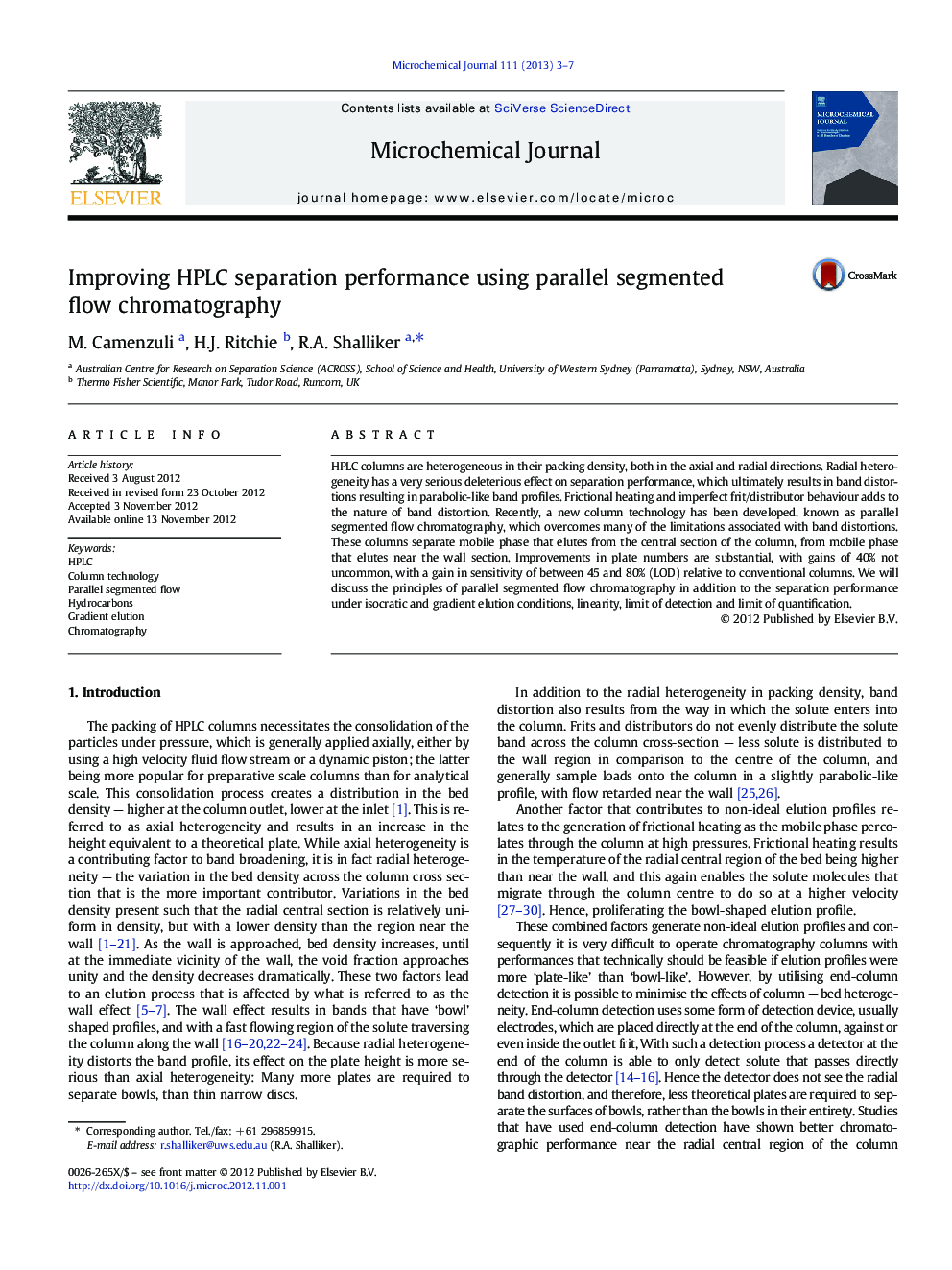| Article ID | Journal | Published Year | Pages | File Type |
|---|---|---|---|---|
| 1227793 | Microchemical Journal | 2013 | 5 Pages |
HPLC columns are heterogeneous in their packing density, both in the axial and radial directions. Radial heterogeneity has a very serious deleterious effect on separation performance, which ultimately results in band distortions resulting in parabolic-like band profiles. Frictional heating and imperfect frit/distributor behaviour adds to the nature of band distortion. Recently, a new column technology has been developed, known as parallel segmented flow chromatography, which overcomes many of the limitations associated with band distortions. These columns separate mobile phase that elutes from the central section of the column, from mobile phase that elutes near the wall section. Improvements in plate numbers are substantial, with gains of 40% not uncommon, with a gain in sensitivity of between 45 and 80% (LOD) relative to conventional columns. We will discuss the principles of parallel segmented flow chromatography in addition to the separation performance under isocratic and gradient elution conditions, linearity, limit of detection and limit of quantification.
► Parallel segmented flow columns were tested in isocratic and gradient elution. ► Efficiency is higher when flow is collected from the central stream. ► Sensitivity is higher when flow is collected from the central section and detected.
